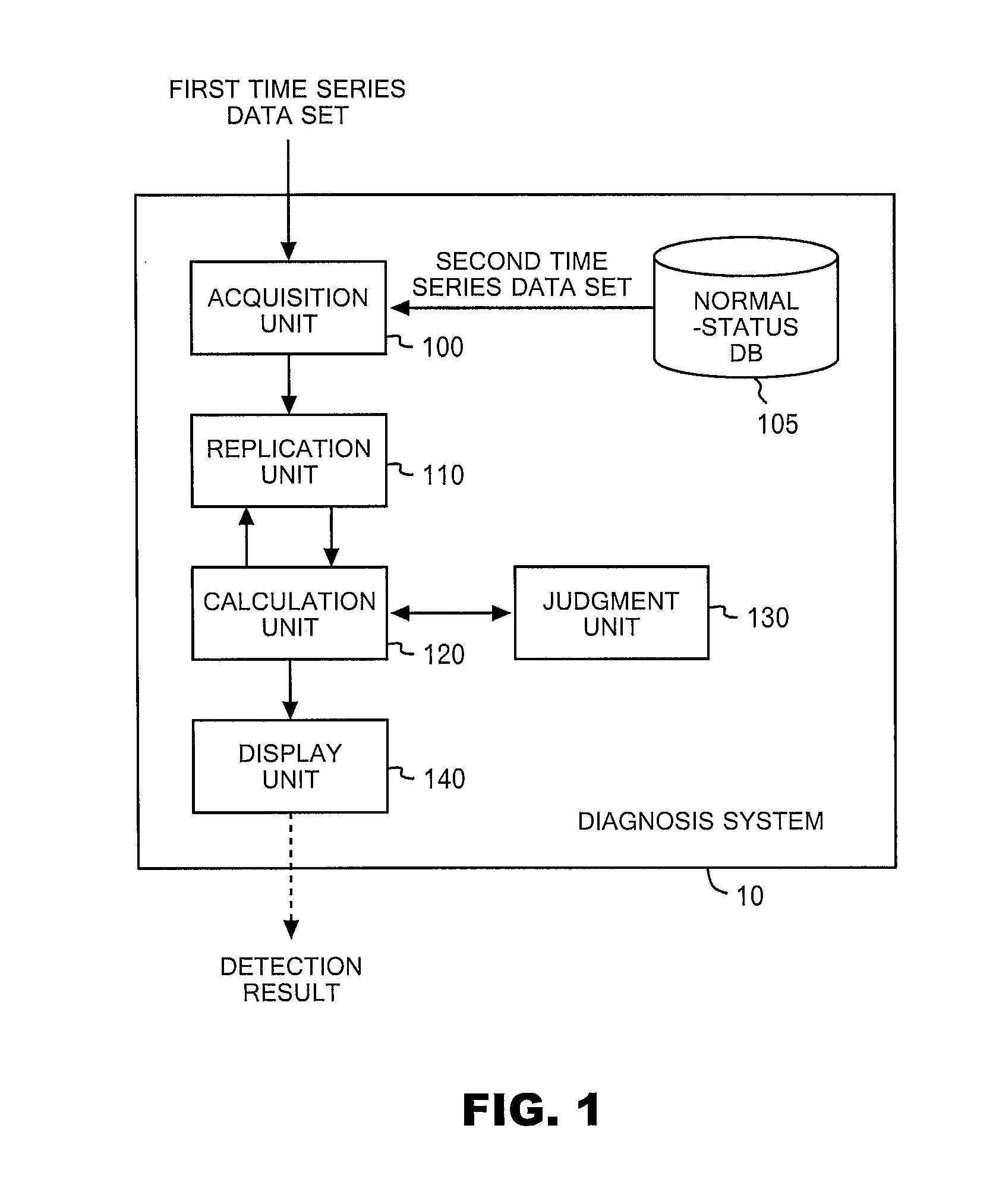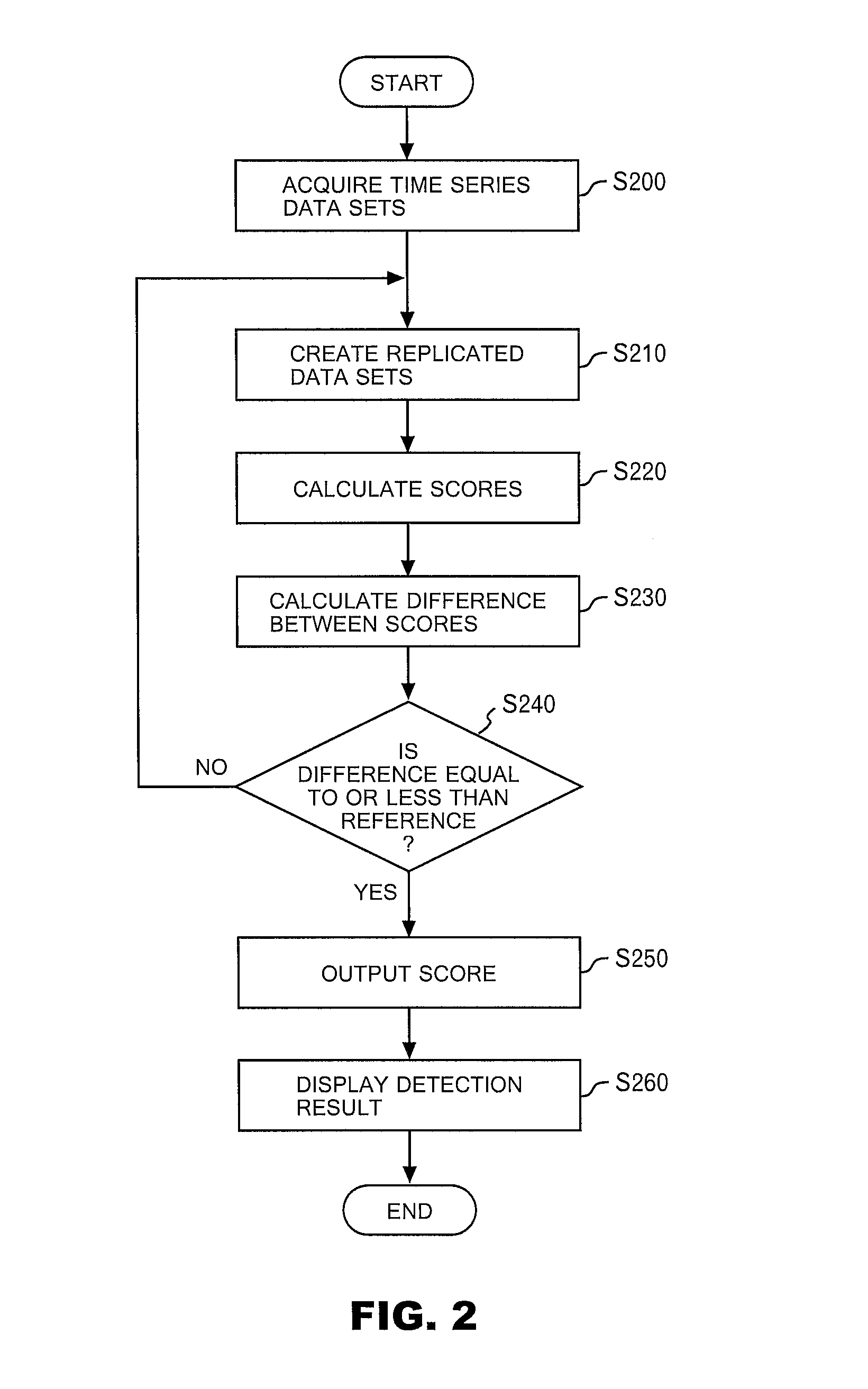Method and system for detecting difference between plural observed results
a technology of plural observed results and detection methods, applied in the direction of denominational number representation computation, testing/monitoring control systems, instruments, etc., can solve the problems of difficult to determine the reference value of a variable for detecting anomalies, and it is unrealistic to assume that enough experienced engineers are available in every field
- Summary
- Abstract
- Description
- Claims
- Application Information
AI Technical Summary
Problems solved by technology
Method used
Image
Examples
Embodiment Construction
[0039]Hereinafter, the present invention will be described by using an embodiment of the present invention. However, the following embodiment does not limit the present invention according to the scope of claims, and all the combinations of features described in the embodiment are not always required for solving means of the invention.
[0040]FIG. 1 shows a functional configuration of a diagnosis system 10. The diagnosis system 10 includes an acquisition unit 100, a normal-status database (DB) 105, a replication unit 110, a calculation unit 120, a judgment unit 130 and a display unit 140. The acquisition unit 100 acquires a first time series data set from outside for each observation variable of a plurality of observation variables, and acquires a second time series data set based on data in the normal-status DB 105. The first time series data set includes a plurality of observed values obtained by observing a certain observation target over time, and is to be used for detecting anoma...
PUM
 Login to View More
Login to View More Abstract
Description
Claims
Application Information
 Login to View More
Login to View More - R&D
- Intellectual Property
- Life Sciences
- Materials
- Tech Scout
- Unparalleled Data Quality
- Higher Quality Content
- 60% Fewer Hallucinations
Browse by: Latest US Patents, China's latest patents, Technical Efficacy Thesaurus, Application Domain, Technology Topic, Popular Technical Reports.
© 2025 PatSnap. All rights reserved.Legal|Privacy policy|Modern Slavery Act Transparency Statement|Sitemap|About US| Contact US: help@patsnap.com



